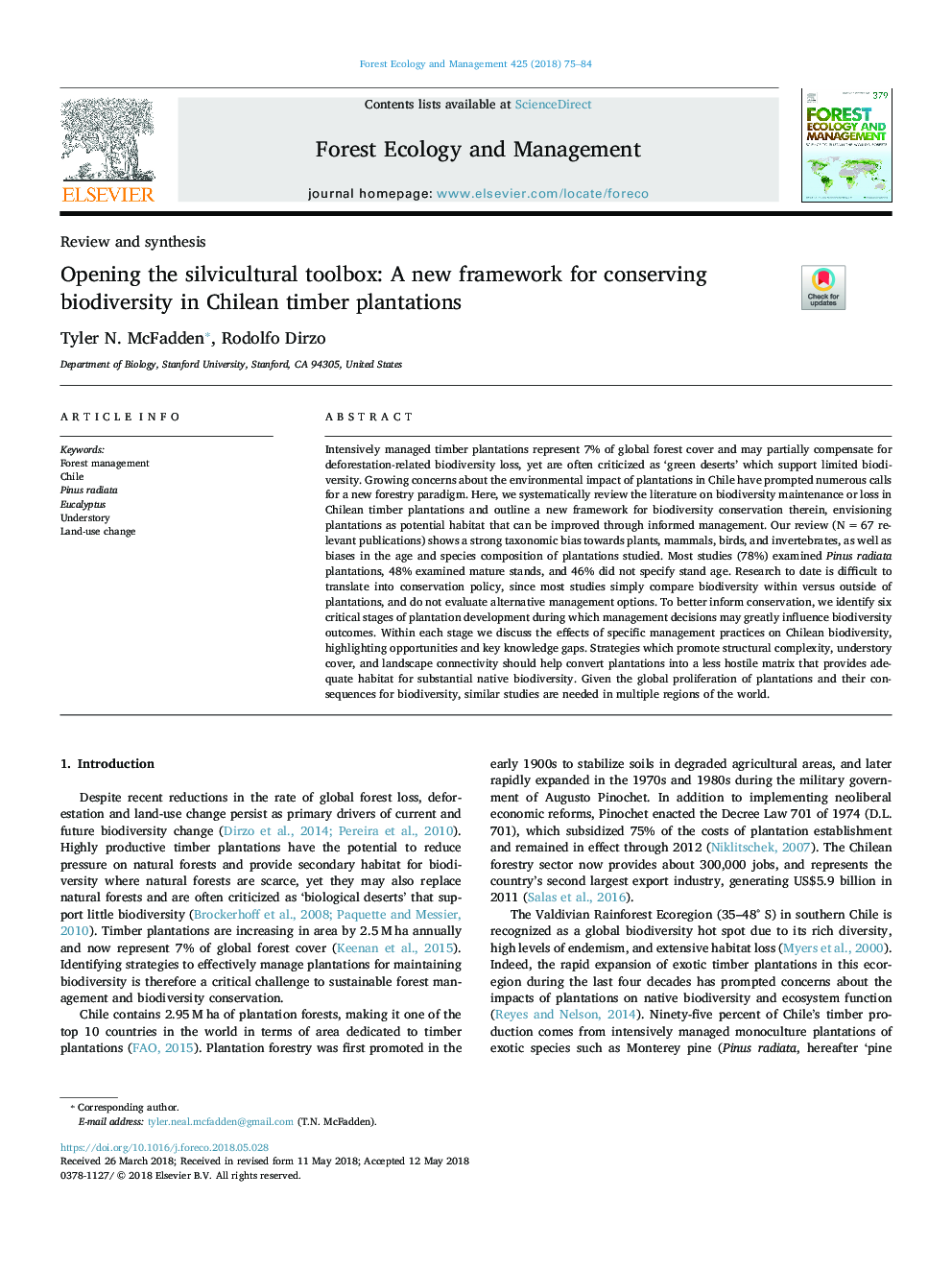| Article ID | Journal | Published Year | Pages | File Type |
|---|---|---|---|---|
| 6541555 | Forest Ecology and Management | 2018 | 10 Pages |
Abstract
Intensively managed timber plantations represent 7% of global forest cover and may partially compensate for deforestation-related biodiversity loss, yet are often criticized as 'green deserts' which support limited biodiversity. Growing concerns about the environmental impact of plantations in Chile have prompted numerous calls for a new forestry paradigm. Here, we systematically review the literature on biodiversity maintenance or loss in Chilean timber plantations and outline a new framework for biodiversity conservation therein, envisioning plantations as potential habitat that can be improved through informed management. Our review (Nâ¯=â¯67 relevant publications) shows a strong taxonomic bias towards plants, mammals, birds, and invertebrates, as well as biases in the age and species composition of plantations studied. Most studies (78%) examined Pinus radiata plantations, 48% examined mature stands, and 46% did not specify stand age. Research to date is difficult to translate into conservation policy, since most studies simply compare biodiversity within versus outside of plantations, and do not evaluate alternative management options. To better inform conservation, we identify six critical stages of plantation development during which management decisions may greatly influence biodiversity outcomes. Within each stage we discuss the effects of specific management practices on Chilean biodiversity, highlighting opportunities and key knowledge gaps. Strategies which promote structural complexity, understory cover, and landscape connectivity should help convert plantations into a less hostile matrix that provides adequate habitat for substantial native biodiversity. Given the global proliferation of plantations and their consequences for biodiversity, similar studies are needed in multiple regions of the world.
Related Topics
Life Sciences
Agricultural and Biological Sciences
Ecology, Evolution, Behavior and Systematics
Authors
Tyler N. McFadden, Rodolfo Dirzo,
